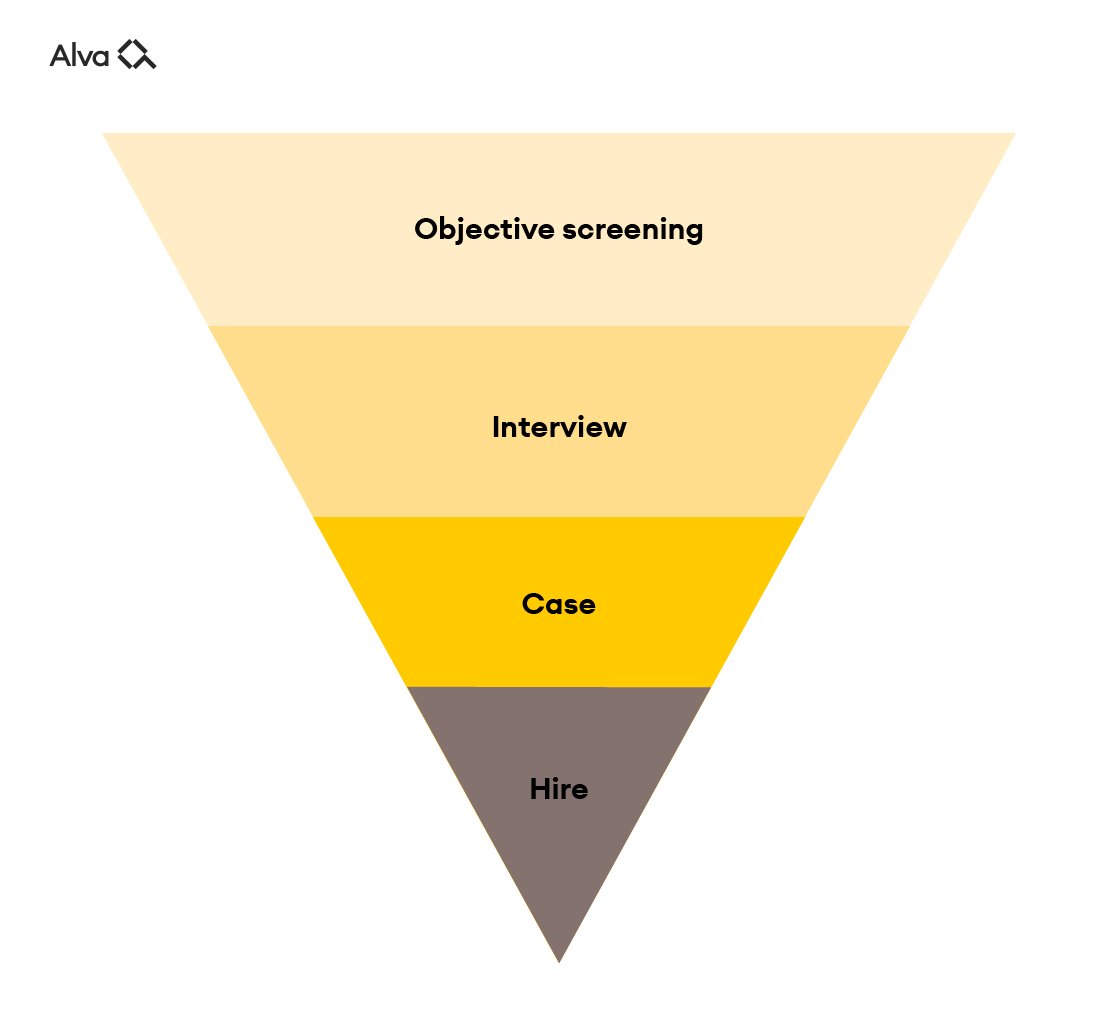With candidates from every age range feeling strung along by false promises, lengthy applications being ignored and talent in short supply, the onus is on recruiters, Hiring Managers and HR teams to demonstrate transparency and respect.
By building in candidate engagement activities to a talent engagement framework, you’ll keep candidates warm, reduce drift, build trust in your employer brand and help you to find the people you need for every hire.
Here are some quick and efficient talent engagement strategies that you can action today.
Ask HR where you tend to lose candidates in the funnel
In spring 2021 we were losing candidates at the first stage of the process. Not something we’re proud of, but hey, it’s a learning process! But we are proud of how we turned it round.
Hack our learnings!:
- Clarify all the process steps in a “Thanks for your application-email”
- Add quick-to-answer, but relevant, screening questions and psychometric assessment early in the process
- Set up a board with all ongoing recruitments, including deadlines for each step, to create an internal overview
- Set up regular weekly time slots for candidate communication. No candidate should ever wait longer than 2 weeks for information, regardless of step in the process
Outcomes? Our candidates now never wait in the inbox for more than, on average, 4 days. And we have managed to decrease the average time to hire from 43 days, to 36 days. A decrease of 19% from start to finish!
Signpost next steps in clear language
Even for your speculative portal or a mass-recruitment drive, take responsibility for your candidates knowing and understanding where they are in the process, at every step. Jens Engrund, Talent Manager at Teledyne FLIR, says “Keeping decisions transparent is key to understanding why decisions have been made.”
To keep candidates engaged at every stage, let them know:
- When can they expect to hear from you
- Do they need to provide any information - when and how?
- What the next steps are.
- When will they know and how?
If you’re new to hiring, look at your ATS (or ask HR to help):
- Automate as much communication as possible
- Build in clear calls to action
- Create emails that allow candidates to understand if their application is being taken forwards, or if it isn’t the right fit at this time
- Word every communication carefully. Help every candidate to leave as a brand ambassador
(Tip: if you’re not confident in your writing, what a Call to Action is, or how to think about your candidates as an ‘audience’, consider asking your marketing team for some help, they should be happy to steer you in the right direction.)
Takeaway: Never leave a candidate wondering what the next steps are. Be clear. Get help from marketing!

Automate (almost) everything for continuous candidate engagement
Keeping candidates warm means anticipating questions before they turn into problems. The average person receives 120 business emails a day, so allow your recruitment process to communicate with your audience: no-one wants to be a breadcrumber. Well-written emails and SMS that provide candidates with timely status updates improve candidate experience and employer brand.
It doesn’t have to be complicated - here’s a sample email to keep candidates warm that you can copy & paste:
Hi [candidate name]!
It's been a while since you applied for a position with us at [company name] and I’m sure you wonder what happens next.
The process is ongoing and you are still highly relevant for us. With that being said, we do not have any news for you yet; please hang in there! We'll get back to you soon with more information!
Thank you for your patience!
[Your name]
Using SMS to communicate with candidates
A caveat: we’d never recommend communicating big decisions via text (is that how you’d like to hear your application wasn’t going forwards?).
Secondly, you can only use SMS if you have legal permission from your candidates; before contacting a candidate via SMS, confirm whether or not you have permission with HR.
But, provided you remember that this is a business communication and you are only asking someone to take one simple action, communicating quickly by SMS helps to keep candidates warm at pace.
Booking an interview
Hi [name]! Your case study was really interesting, and we’d love to learn more in a second interview. Here’s a link to my calendar, book a slot that suits you! [your name]
Hi [name] - [your name] from [your company] here! Thanks for your application to [job title]. We’re really interested to meet you for a first interview next week. Here’s a link to my calendar, book a slot that suits you!
Nudging candidates
Hi [name]! Just a reminder that our interview is scheduled for [day], at [time], at [our office/link]. Really looking forward to meeting you! [your name]
Hi [name], it’s [your name] from [your company] here. We haven’t heard from you in a while, and we want to assure you that your application is moving forwards. Let me know if there’s anything you need from us!
Takeaway: Pre-empt gaps in communication and think about how you can be most efficient and helpful to your candidates.
Share your Mission to drive commitment
Candidates from every demographic are looking for work that has purpose at its core. pwc’s Adam Bryant reports that, “to win the war for talent, companies are focusing their recruiting pitches on goals and ambitions that are loftier than simply making money for investors.”
Make sure your candidates understand your company’s mission from pre-application.
Every applicant must understand the difference that the position will make to the wider world.
When you’re writing the Job Description, and at every point of contact, remind the candidate how this job helps to deliver your company’s mission and purpose - and the difference they’ll make if they stick with you.
Takeaway: Use mission and purpose in the job description as part of a candidate engagement plan, in the ad and in every part of the recruitment process.
Career progression, coaching and mentoring
82% of Gen Z job hunters are looking to work with organisations who will support their career progression through mentoring, active feedback and coaching. To keep candidates engaged, communicate how you support your team members with training, coaching and mentoring, so candidates know that a job or internship with you is an investment in their own future. We communicate this via a micro-site.
Time is of the essence
If you’re experiencing a high rate of candidate drop off, look at your Time to Hire. In looking to de-risk hiring, some organisations demand 3, 4 or 5 interviews - this isn't necessary. Consider how many interviews you’re asking people to attend, and for how long.
How many people are needed to sign off any processes? Organisational debt accrues when we don’t review processes.
Ask your HR team to confirm if every approval that was needed, is still needed.
Do you really need 4 hour interviews? Three rounds? A succinct, structured interview process of psychometric assessment, a case study and two interviews should provide you with the insights you need, from internship to team leaders
Takeaway: Most posts need only assessments, two structured interviews and a case study. Don’t waste time!
Keeping candidates warm in a competitive economy is a core component of any hiring strategy. Reframe any outdated notions that candidates should be lucky to work with you; remember that candidates are as potent brand ambassadors as customers. and avoid your communications being the latest Buzzfeed horror story.
The templates we've provided will help you to engage candidates at every stage of the funnel; clear, consistent and helpful communication, and a targeted hiring process will help you to create a streamlined candidate engagement process that delivers results.
Want more tips to help you create an efficient, structured interview process? Click here for our downloadable and customisable Alva Guide to Structured Interviews 👇👇







